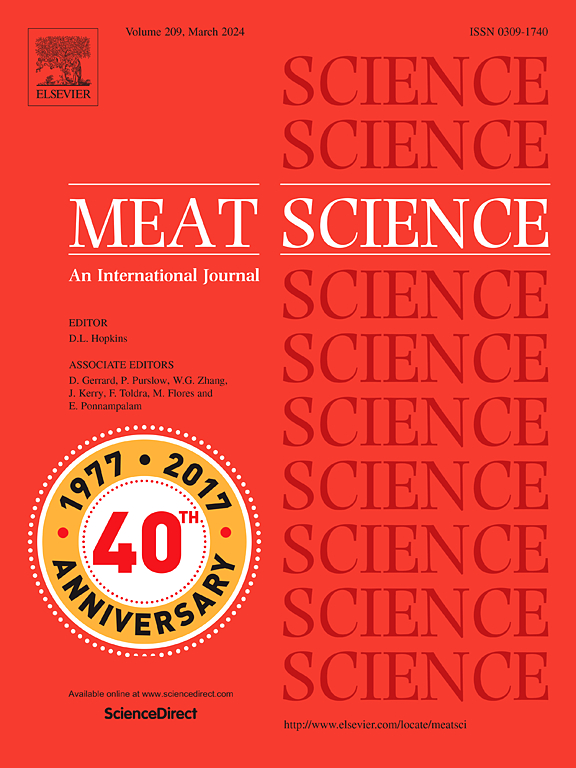长期饲粮中添加枯草芽孢杆菌对高氧包装下猪肉颜色和氧化稳定性的影响。
IF 7.1
1区 农林科学
Q1 Agricultural and Biological Sciences
引用次数: 0
摘要
本研究旨在探讨猪饲粮中添加枯草芽孢杆菌(B. subtilis)对高氧包装下猪肉颜色和氧化稳定性的影响。结果表明,枯草芽孢杆菌增加了红度(a*) (P本文章由计算机程序翻译,如有差异,请以英文原文为准。
Effect of long-term dietary supplementation with Bacillus subtilis in pigs on meat color and oxidative stability under high‑oxygen packaging
This study aimed to investigate the effects of dietary Bacillus subtilis (B. subtilis) supplementation in pigs on the meat color and oxidative stability of the meat under high‑oxygen packaging. The results showed B. subtilis increased redness (a*) (P < 0.05), accompanied by inhibiting the formation of metmyoglobin (MetMb) of pork, and maintained better meat color during storage. Compared to the control group, dietary B. subtilis supplementation increased the R630/580 value, metmyoglobin-reducing activity (MRA) and the oxygen consumption rate (OCR) of pork (P < 0.05), and the pork had better meat color stability. B. subtilis supplementation also upregulated the expression of Nrf2 and downstream antioxidant enzyme genes (SOD, CAT, and GSH-Px) in the Nrf2-Keap1 signaling pathway and downregulated the expression of the Keap1 (P < 0.05). The activities of superoxide dismutase (SOD) and glutathione peroxidase (GSH-Px) and catalase (CAT) in longissimus thoracis et lumborum (LTL) muscle were increased by B. subtilis while the levels of lipid and protein oxidation were decreased (P < 0.05). All results confirmed that dietary B. subtilis supplementation could effectively maintain the meat color and delay the oxidation of chilled pork compared to the control.
求助全文
通过发布文献求助,成功后即可免费获取论文全文。
去求助
来源期刊

Meat Science
工程技术-食品科技
CiteScore
12.60
自引率
9.90%
发文量
282
审稿时长
60 days
期刊介绍:
The aim of Meat Science is to serve as a suitable platform for the dissemination of interdisciplinary and international knowledge on all factors influencing the properties of meat. While the journal primarily focuses on the flesh of mammals, contributions related to poultry will be considered if they enhance the overall understanding of the relationship between muscle nature and meat quality post mortem. Additionally, papers on large birds (e.g., emus, ostriches) as well as wild-captured mammals and crocodiles will be welcomed.
 求助内容:
求助内容: 应助结果提醒方式:
应助结果提醒方式:


